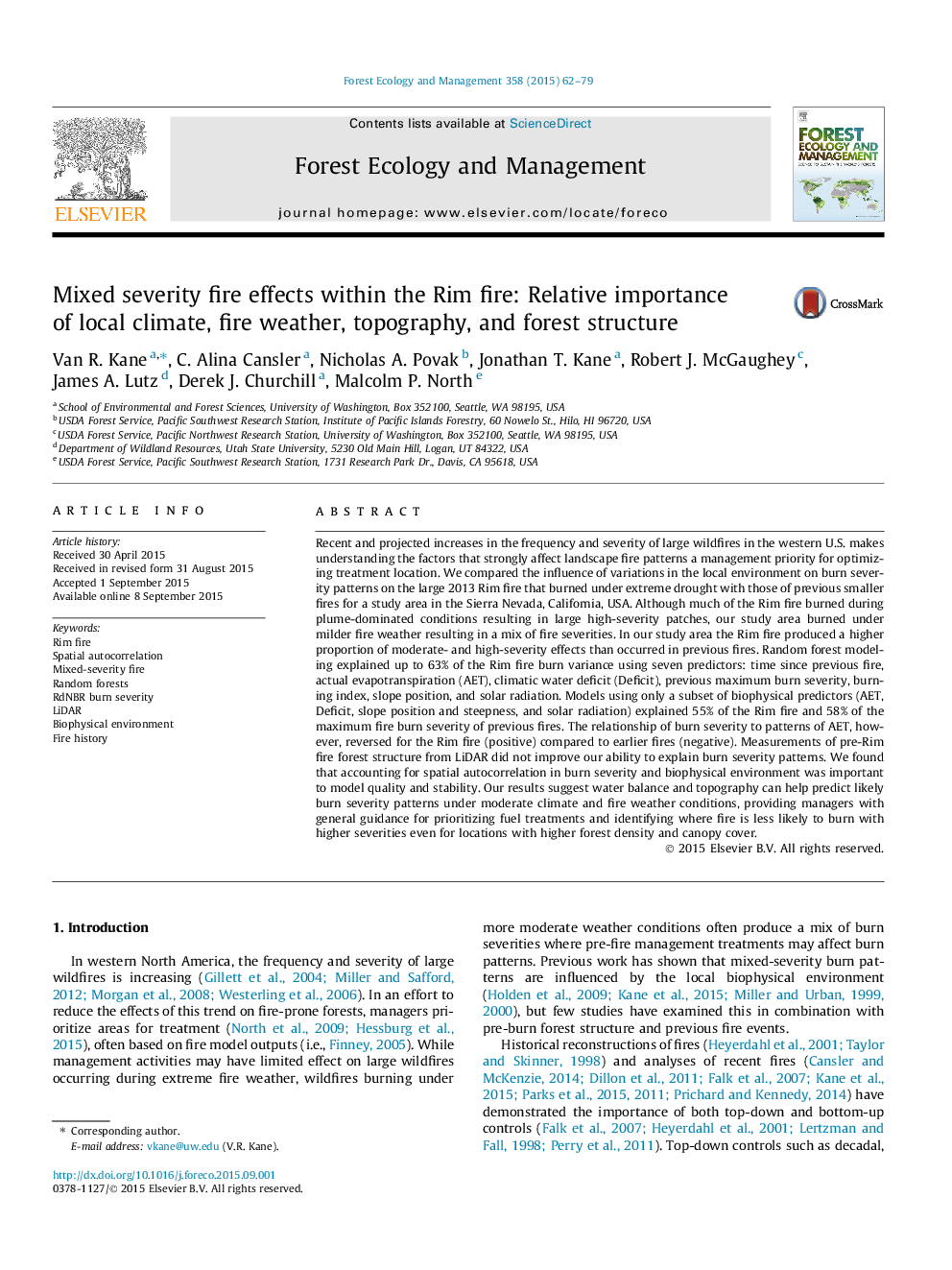| کد مقاله | کد نشریه | سال انتشار | مقاله انگلیسی | نسخه تمام متن |
|---|---|---|---|---|
| 86060 | 159163 | 2015 | 18 صفحه PDF | دانلود رایگان |
• Examined importance of controls on mixed-severity burn patterns.
• Biophysical environment and fire history best explained burn severity patterns.
• Spatial autocorrelation important factor when modeling burn severity patterns.
• Pre-fire airborne LiDAR measurements of forest structure did not improve results.
• Methods provide means to estimate likely burn severity patterns across landscapes.
Recent and projected increases in the frequency and severity of large wildfires in the western U.S. makes understanding the factors that strongly affect landscape fire patterns a management priority for optimizing treatment location. We compared the influence of variations in the local environment on burn severity patterns on the large 2013 Rim fire that burned under extreme drought with those of previous smaller fires for a study area in the Sierra Nevada, California, USA. Although much of the Rim fire burned during plume-dominated conditions resulting in large high-severity patches, our study area burned under milder fire weather resulting in a mix of fire severities. In our study area the Rim fire produced a higher proportion of moderate- and high-severity effects than occurred in previous fires. Random forest modeling explained up to 63% of the Rim fire burn variance using seven predictors: time since previous fire, actual evapotranspiration (AET), climatic water deficit (Deficit), previous maximum burn severity, burning index, slope position, and solar radiation. Models using only a subset of biophysical predictors (AET, Deficit, slope position and steepness, and solar radiation) explained 55% of the Rim fire and 58% of the maximum fire burn severity of previous fires. The relationship of burn severity to patterns of AET, however, reversed for the Rim fire (positive) compared to earlier fires (negative). Measurements of pre-Rim fire forest structure from LiDAR did not improve our ability to explain burn severity patterns. We found that accounting for spatial autocorrelation in burn severity and biophysical environment was important to model quality and stability. Our results suggest water balance and topography can help predict likely burn severity patterns under moderate climate and fire weather conditions, providing managers with general guidance for prioritizing fuel treatments and identifying where fire is less likely to burn with higher severities even for locations with higher forest density and canopy cover.
Journal: Forest Ecology and Management - Volume 358, 15 December 2015, Pages 62–79
